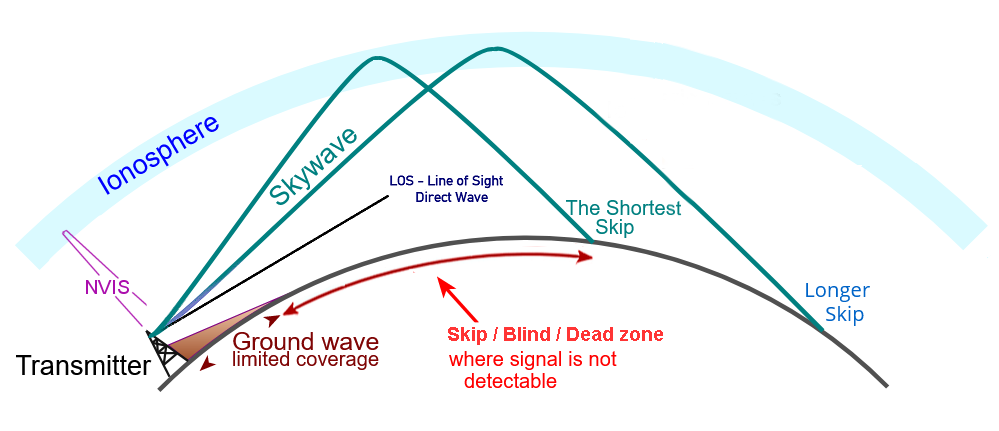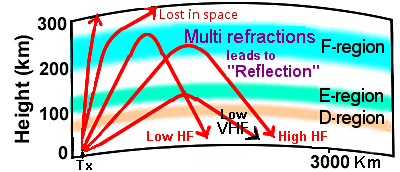
 An Introduction to HF Propagation
An Introduction to HF Propagation
The Skywave Phenomenon
High Frequency (HF) propagation refers to the transmission of radio waves within the 3 to 30 MHz range as they interact with the Earth's atmosphere. Among the most intriguing aspects of HF propagation is the skywave—a phenomenon that allows radio signals to travel well beyond the horizon by reflecting off the ionosphere. This capability makes skywave propagation essential for long-distance, over-the-horizon communication.
Skywave propagation is a foundational element in amateur radio, international broadcasting, and emergency communication systems. It enables global connectivity without relying on satellites or extensive ground-based infrastructure. For instance, a ham radio operator in North America can establish contact with someone in Europe by selecting the appropriate frequency and timing, taking advantage of favorable ionospheric conditions.
However, skywave communication is not without its challenges. One notable limitation is the presence of "skip zones"—regions between the transmitter and the signal’s return point where no reception occurs. These dead zones can hinder reliable communication and require careful planning to avoid.
 Figure 1: Illustration of LOS, Ground Wave and Skip Propagation |
Skywave propagation occurs when HF radio waves are transmitted toward the sky and refracted, or bent, back to Earth by the ionosphere—a region of the upper atmosphere containing charged particles ionized by solar radiation. The ionosphere acts like a natural "reflector," allowing radio signals to "skip" over the horizon and reach distant locations hundreds or even thousands of kilometers away. This refraction is possible because the ionosphere's regions, particularly the F-region during the day and the combined F1/F2 regions at night, have varying densities of free electrons that interact with HF waves.
The effectiveness of skywave propagation depends on several factors, including the frequency of the radio wave, the angle of transmission, and the ionosphere's condition. Lower HF frequencies tend to refract more easily but may be absorbed by the lower D-region during daylight hours, while higher frequencies can penetrate further but require optimal ionospheric conditions to bend back to Earth.
Unpredictable Skywave Conditions
Solar activity, such as sunspots and flares, also influences the ionosphere's refractivity, making skywave propagation dynamic and somewhat unpredictable.
 Real-time propagation conditions by HF Activity Group ↗ Real-time propagation conditions by HF Activity Group ↗The HF score graph below demonstrates fluctuations over time (UTC), indicating varying levels of solar and geomagnetic activity. Peaks indicate ideal (global) propagation conditions, while dips indicate poor conditions.
The red line represents a 48-hour global trend for reference. |
In conclusion, skywave propagation is a remarkable natural phenomenon that harnesses the ionosphere to extend the range of HF radio waves far beyond what ground-based methods allow. Its reliance on atmospheric conditions makes it both a science and an art, captivating radio enthusiasts and professionals alike. Understanding skywave opens the door to exploring the broader world of HF propagation and its practical applications.
